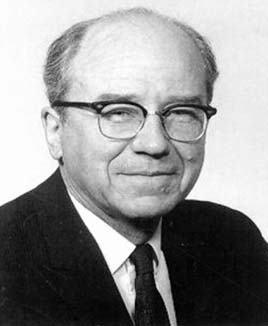


 تاريخ الرياضيات
تاريخ الرياضيات
 الرياضيات في الحضارات المختلفة
الرياضيات في الحضارات المختلفة 
 الرياضيات المتقطعة
الرياضيات المتقطعة
 الجبر
الجبر
 الهندسة
الهندسة 
 المعادلات التفاضلية و التكاملية
المعادلات التفاضلية و التكاملية 
 التحليل
التحليل
 علماء الرياضيات
علماء الرياضيات |
Read More
Date: 14-11-2017
Date: 3-11-2017
Date: 3-11-2017
|
Died: 1992 in Vancouver, Canada

Eizens (Eugene) Leimanis's father was a farmer and Eizens was born on the Vecbaizas estate near Valmiera. As a young boy his parents began to teach him at home, then after the family moved to Riga when he was six years old, Eizens entered a primary school there. He continued his education in Riga, attending Riga's First Gymnasium from which he graduated in 1924.
Leimanis was brought up in Latvia near the end of a long period of Russian domination. During his time at secondary school World War I had caused severe problems. However, in 1917 the Russian domination of Latvia ended and, after a brief period of German invasion, the country became independent in a proclamation made on 18 November 1918. Within this new independent country there was a wish to quickly found a national university and the University of Latvia was founded in September 1919. It was into this new University of Latvia that Leimanis entered in 1924. There he was taught by Meders and obtained his Master's Degree in 1929.
After the award of his Master's Degree Leimanis was appointed as an assistant in the Department of Descriptive Geometry at the University, but he supplemented his income by teaching mathematics at the Riga School of Commerce during session 1930-31. Keen to broaden his education, Leimanis set off in 1931 to visit various places in Europe with very different mathematical specialities. First he went to the University of Leipzig, where Koebe was on the staff and van der Waerden had just been appointed as Professor, taking courses in pure mathematics. He next went to Copenhagen Astronomical Observatory where he studied celestial mechanics. Returning to Latvia, he was awarded a doctorate for a thesis on algebraic geometry and appointed as a dozent in the Department of Pure Mathematics at the University of Latvia.
Immediately he was on his travels again, this time going to Paris where he spent a year at the Henri Poincaré Institute undertaking research on differential equations and celestial mechanics. He made the most of the very active mathematical scene in Paris for he also attended Hadamard's seminar, and attended courses at the Collège de France and the University of Paris. Leaving Paris in the summer of 1936, he went to Oslo to attend the International Congress of Mathematicians. Back in Riga, he was appointed as a dozent in 1937 in the Department of Theoretical Astronomy and Analytical Mechanics at the University of Latvia.
The German-Soviet Nonaggression Pact was signed in August 1939 and Latvia's fate was out of its own hands. On 17 June 1940 the Red Army invaded Latvia and only three days later a new government of Soviet supporters was announced. They voted on 21 July for Latvia to become a part of the USSR and on 5 August this became official. The Soviet occupation saw around 35,000 Latvians deported to Russia within a year. During this extremely difficult period Leimanis continued to teach and undertake research at the University of Latvia. However, there were dramatic changes when the German army invaded Latvia in July 1941. For a period Latvia was a province of a larger Ostland (including Estonia, Lithuania, and Byelorussia). In 1944 the Soviet army again marched into Latvia and a renewed period of Soviet domination began. At this time Leimanis was forced to go to Danzig as a refugee.
For a while Leimanis taught at the Baltics University in Hamburg but in 1949 he emigrated to Canada, becoming professor at Columbia University in Vancouver.
In 1958 Leimanis published Some recent advances in the dynamics of rigid bodies and celestial mechanics. Dynamics and nonlinear mechanics. This article is part of the Surveys in Applied Mathematics and were written as a joint project of the Office Of Naval Research and Applied Mechanics Reviews. F Joachim Weyl explains in the Preface to the book the purpose of the surveys:-
[T]he survey articles have the primary objective of summarizing the state of selected fields of applied mathematics, particularly those fields whose current state cannot be satisfactorily assessed without a study of the less accessible literature on the subject. The articles are not written for specialists in the field, but are aimed at a fairly broad audience, including engineers.
J P LaSalle, reviewing Leimanis' article, writes:-
Leimanis's survey of dynamics is well organized and, especially when one considers the limitations of a survey, his presentation of the topics he selected is both interesting and complete. He does particularly well in giving an account of some of the recent Soviet and Italian contributions.
Leimanis continued to publish and, when he was approaching 80, the paper On integration of the differential equation of central motion appeared. The authors describes the content as follows:-
Assuming that the force acting on a particle is of the form f(r)g(q), the theory of infinitesimal transformations is applied to determine the forms of f(r) and g(q) for which the differential equation of central motion is integrable by quadratures or reducible to a first-order differential equation.
Articles:



|
|
|
|
دخلت غرفة فنسيت ماذا تريد من داخلها.. خبير يفسر الحالة
|
|
|
|
|
|
|
ثورة طبية.. ابتكار أصغر جهاز لتنظيم ضربات القلب في العالم
|
|
|
|
|
|
|
العتبتان المقدستان تستذكران فاجعة هدم قبور أئمة البقيع (عليهم السلام)
|
|
|